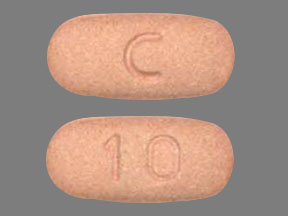
Fluconazole Coupons & Savings Card – Discount Prices from $3.86
Generic for: Diflucan
My prescription
Edit
150MG, Fluconazole (2 Tablets)
Select pharmacy

CVS
$18.68
COUPON PRICE
Walmart
$3.86
COUPON PRICE
Walgreens
$10.15
COUPON PRICE
Albertsons
$11.17
COUPON PRICEFluconazole savings card
Show this card to your pharmacist
Walmart
$3.86
BIN
ID
PCN
GRP
019876
LH94950B89
CHIPPO
LHX
Powered by
More prescriptions for yeast infection
More prescriptions for yeast infection
Price history for Diflucan (brand) & Fluconazole (generic)
2 Tablets, 150MG
Average retail price for Diflucan
Average retail price for Fluconazole
Average SaveHealth price for Fluconazole
Our price history data is based on aggregated prescription data collected from participating pharmacies in America. Our prescription data updates daily to reflect the latest price changes. If you notice a missing data point, it means there wasn't sufficient data available to generate a monetary value for that date.
We analyzed Fluconazole prices for (150MG, 2 Tablets) over the last 12 months. The average retail price was $10.95, while the average price using the SaveHealth discount card was $9.18. That's a savings of approximately 16.16% when using our Fluconazole coupon.
Compared to the generic version, Diflucan had an average price of $29.94 over the same time period. With the SaveHealth savings card, Fluconazole is 69.34% cheaper on average than Diflucan.
*Retail prices are based on pharmacy claims data, and may not be accurate when we don't have enough claims.
Fluconazole dosage forms
Dosage Quantity Price from Per unit 50MG 30 Tablets $5.18 $0.17 50MG 60 Tablets $14.36 $0.24 50MG 100 Tablets $33.80 $0.34 100MG 1 Tablet $2.80 $2.80 100MG 2 Tablets $3.11 $1.55 100MG 3 Tablets $3.41 $1.14 100MG 6 Tablets $4.33 $0.72 100MG 7 Tablets $4.63 $0.66 100MG 8 Tablets $4.94 $0.62 100MG 10 Tablets $5.55 $0.56
| Dosage | Quantity | Price from | Per unit |
|---|---|---|---|
| 50MG | 30 Tablets | $5.18 | $0.17 |
| 50MG | 60 Tablets | $14.36 | $0.24 |
| 50MG | 100 Tablets | $33.80 | $0.34 |
| 100MG | 1 Tablet | $2.80 | $2.80 |
| 100MG | 2 Tablets | $3.11 | $1.55 |
| 100MG | 3 Tablets | $3.41 | $1.14 |
| 100MG | 6 Tablets | $4.33 | $0.72 |
| 100MG | 7 Tablets | $4.63 | $0.66 |
| 100MG | 8 Tablets | $4.94 | $0.62 |
| 100MG | 10 Tablets | $5.55 | $0.56 |
| 100MG | 14 Tablets | $6.76 | $0.48 |
| 100MG | 30 Tablets | $11.64 | $0.39 |
| 100MG | 50 Tablets | $17.73 | $0.35 |
| 100MG | 100 Tablets | $35.40 | $0.35 |
| 150MG | 2 Tablets | $3.86 | $1.93 |
| 150MG | 1 Tablet | $3.18 | $3.18 |
| 150MG | 3 Tablets | $4.53 | $1.51 |
| 150MG | 4 Tablets | $5.21 | $1.30 |
| 150MG | 12 Tablets | $10.63 | $0.89 |
| 200MG | 1 Tablet | $2.96 | $2.96 |
| 200MG | 2 Tablets | $3.42 | $1.71 |
| 200MG | 3 Tablets | $3.88 | $1.29 |
| 200MG | 4 Tablets | $4.34 | $1.08 |
| 200MG | 10 Tablets | $12.97 | $1.30 |
| 200MG | 20 Tablets | $25.94 | $1.30 |
| 200MG | 28 Tablets | $29.12 | $1.04 |
| 200MG | 30 Tablets | $29.91 | $1.00 |
| 200MG | 50 Tablets | $33.27 | $0.67 |
| 200MG | 60 Tablets | $34.66 | $0.58 |
| 200MG | 90 Tablets | $38.85 | $0.43 |
| 200MG | 100 Tablets | $40.24 | $0.40 |
Fluconazole Warnings
The following information outlines important safety and warning details associated with the use of this medication. It is crucial to review these points carefully and consult your healthcare provider if you have any questions or concerns.
Liver Damage: Though infrequent, some individuals taking fluconazole (Diflucan) have experienced liver issues. Your healthcare provider may recommend blood tests before and during treatment to monitor your liver function. It's advisable to limit or avoid alcohol consumption, as it can also harm the liver. Seek immediate medical attention if you observe yellowing of the skin or eyes, changes in stool color, dark urine, abdominal swelling, stomach pain, or confusion. Your doctor may advise discontinuing fluconazole (Diflucan) to prevent further liver damage. Risks include liver problems and excessive alcohol use.
Allergic Reactions: Fluconazole (Diflucan) can cause severe allergic reactions, potentially life-threatening, such as facial swelling, hives, and anaphylaxis. If you experience breathing difficulties, a choking sensation, dizziness, rapid heartbeat, nausea, or swelling around the eyes, lips, or tongue, seek medical help immediately.
Severe Skin Reaction: On rare occasions, individuals may develop a serious skin condition known as exfoliative dermatitis after using fluconazole (Diflucan). This rash can lead to widespread itchiness, redness, and peeling skin. Get medical attention promptly if you notice a new or severe rash accompanied by fever, skin redness, or unexplained blisters.
Harm to Unborn Babies: It is generally advised to avoid fluconazole (Diflucan) during pregnancy unless absolutely necessary. Limited studies suggest a slight risk of harm to the unborn baby, including potential heart, head, face, and bone issues. If taking doses between 400 mg to 800 mg daily, use birth control during treatment and for one week after the final dose. If pregnancy occurs while on fluconazole (Diflucan), discontinue use immediately and discuss the risks and benefits with your healthcare provider.
Contraindications: Individuals taking medications that can prolong the QT interval (a specific heart rhythm) should consult their healthcare provider before using this medication, as it may pose serious health risks.
Always ensure to follow your healthcare provider's guidance and report any unusual symptoms or concerns promptly.
Fluconazole Side Effects
Common side effects:
- headache
- nausea
- stomach pain
- diarrhea
Less common but important to monitor:
- vomiting
- skin rash
- dizziness
Serious side effects:
- adrenal glands not functioning properly
- loss of appetite
- unusual tiredness
- fast or irregular heartbeat
- severe dizziness
- fainting
- severe liver disease
- persistent nausea or vomiting
- severe stomach pain
- yellowing of the eyes or skin
- dark urine
- very serious allergic reaction
- fever
- swollen lymph nodes
- rash
- itching
- trouble breathing
Fluconazole Interactions
Interactions with high risk of serious adverse effects and should be avoided:
- Alfuzosin
- Amiodarone
- Aripiprazole
- Aripiprazole Lauroxil
- Artemether
- Astemizole
- Atazanavir
- Bedaquiline
- Bepridil
- Buprenorphine
- Cisapride
- Citalopram
- Clarithromycin
- Clozapine
- Crizotinib
- Dabrafenib
- Dasatinib
- Dofetilide
- Domperidone
- Donepezil
- Dronedarone
- Eliglustat
- Encorafenib
- Entrectinib
- Erythromycin
- Escitalopram
- Flibanserin
- Glasdegib
- Granisetron
- Haloperidol
- Iloperidone
- Itraconazole
- Ivabradine
- Ivosidenib
- Ketoconazole
- Lapatinib
- Levomethadyl
- Lomitapide
- Lumefantrine
- Macimorelin
- Mefloquine
- Mesoridazine
- Methadone
- Mifepristone
- Mirtazapine
- Nilotinib
- Ondansetron
- Osilodrostat
- Panobinostat
- Pazopanib
- Pimavanserin
- Pimozide
- Piperaquine
- Pitolisant
- Propafenone
- Quetiapine
- Quinidine
- Quinine
- Ribociclib
- Ritonavir
- Saquinavir
- Selpercatinib
- Solifenacin
- Sorafenib
- Sparfloxacin
- Sunitinib
- Tacrolimus
- Tamoxifen
- Telaprevir
- Telithromycin
- Terfenadine
- Thioridazine
- Toremifene
- Trazodone
- Vandetanib
- Vardenafil
- Vemurafenib
- Vilanterol
- Vinflunine
- Voclosporin
- Voriconazole
- Ziprasidone
Interactions with moderate risk that may require dose adjustment, closer monitoring, or timing changes:
- Acalabrutinib
- Acenocoumarol
- Ajmaline
- Alfentanil
- Alprazolam
- Amisulpride
- Amitriptyline
- Amoxapine
- Anagrelide
- Anisindione
- Apixaban
- Apomorphine
- Aprepitant
- Aprindine
- Arsenic Trioxide
- Asenapine
- Atorvastatin
- Avapritinib
- Avatrombopag
- Azilsartan
- Azilsartan Medoxomil
- Azithromycin
- Benzhydrocodone
- Bosutinib
- Bretylium
- Brexpiprazole
- Brigatinib
- Buserelin
- Carbamazepine
- Carvedilol
- Ceritinib
- Cerivastatin
- Chloral Hydrate
- Chloroquine
- Chlorpromazine
- Cilostazol
- Ciprofloxacin
- Clofazimine
- Clomipramine
- Clopidogrel
- Cobimetinib
- Codeine
- Colchicine
- Conivaptan
- Cyclobenzaprine
- Cyclosporine
- Deflazacort
- Degarelix
- Delamanid
- Desipramine
- Deslorelin
- Deutetrabenazine
- Dibenzepin
- Dicumarol
- Dihydrocodeine
- Dihydroergotamine
- Disopyramide
- Dolasetron
- Doxepin
- Doxorubicin
- Doxorubicin Hydrochloride Liposome
- Droperidol
- Ebastine
- Efavirenz
- Elexacaftor
- Enflurane
- Eplerenone
- Ergoloid Mesylates
- Ergonovine
- Ergotamine
- Eribulin
- Famotidine
- Felbamate
- Fentanyl
- Fingolimod
- Flecainide
- Fluoxetine
- Fluvastatin
- Formoterol
- Fosaprepitant
- Foscarnet
- Fostemsavir
- Galantamine
- Gatifloxacin
- Gemifloxacin
- Gonadorelin
- Goserelin
- Halofantrine
- Halothane
- Histrelin
- Hydrocodone
- Hydroquinidine
- Hydroxychloroquine
- Hydroxyzine
- Ibrutinib
- Ibutilide
- Ifosfamide
- Imipramine
- Inotuzumab Ozogamicin
- Irbesartan
- Isoflurane
- Isradipine
- Ivacaftor
- Lefamulin
- Lemborexant
- Lenvatinib
- Levofloxacin
- Levomilnacipran
- Lidoflazine
- Lofexidine
- Lopinavir
- Lorcainide
- Lorlatinib
- Lovastatin
- Lumateperone
- Lurasidone
- Lurbinectedin
- Macitentan
- Meperidine
- Mephenytoin
- Meprobamate
- Methotrimeprazine
- Methylergonovine
- Metronidazole
- Milnacipran
- Mizolastine
- Moricizine
- Moxifloxacin
- Nafarelin
- Naloxegol
- Nevirapine
- Nisoldipine
- Nitrofurantoin
- Norfloxacin
- Nortriptyline
- Octreotide
- Ofloxacin
- Olanzapine
- Olaparib
- Osimertinib
- Ospemifene
- Oxaliplatin
- Oxycodone
- Ozanimod
- Paclitaxel
- Paliperidone
- Papaverine
- Parecoxib
- Paroxetine
- Pasireotide
- Pemigatinib
- Pentamidine
- Pentazocine
- Perphenazine
- Pexidartinib
- Phenindione
- Phenobarbital
- Phenprocoumon
- Pipamperone
- Pirmenol
- Ponesimod
- Posaconazole
- Prajmaline
- Probucol
- Procainamide
- Prochlorperazine
- Promethazine
- Protriptyline
- Ranolazine
- Rifabutin
- Rimegepant
- Risperidone
- Ruxolitinib
- Selumetinib
- Sertindole
- Sertraline
- Sevoflurane
- Sildenafil
- Simeprevir
- Simvastatin
- Siponimod
- Sirolimus
- Sodium Phosphate
- Sodium Phosphate, Dibasic
- Sodium Phosphate, Monobasic
- Sonidegib
- Sotalol
- Spiramycin
- Sufentanil
- Sulfamethoxazole
- Sulpiride
- Sultopride
- Tazemetostat
- Telavancin
- Temsirolimus
- Tetrabenazine
- Tezacaftor
- Theophylline
- Ticagrelor
- Tolterodine
- Tolvaptan
- Torsemide
- Tramadol
- Triazolam
- Triclabendazole
- Trifluoperazine
- Trimethoprim
- Trimipramine
- Triptorelin
- Ubrogepant
- Valdecoxib
- Venetoclax
- Venlafaxine
- Vinblastine
- Vincristine
- Vincristine Sulfate Liposome
- Vorinostat
- Vortioxetine
- Voxelotor
- Warfarin
- Zanubrutinib
- Zolmitriptan
- Zotepine
- Zuclopenthixol
